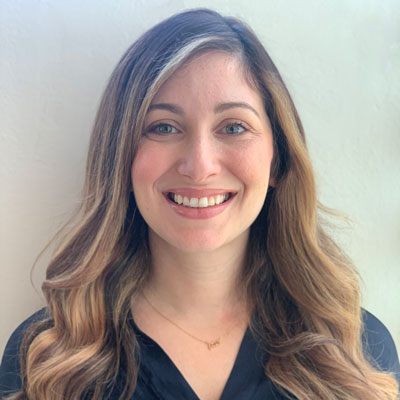Welcome to TeleSpecialists TelePedia
-
Associations
- American Academy of Neurology (AAN)
- American Association of Neuroscience Nurses (AANN)
- American Board of Psychiatry and Neurology, Inc. (ABPN)
- American Heart Association (AHA)
- American Stroke Association (ASA)
- American TeleMedicine Association (ATA)
- Centers for Medicare & Medicaid Services (CMS)
- ISO 9001:2015
- The Joint Commission
- Show all Terms ( 4 ) Collapse Terms
-
Equipment
-
Facilities
- Acute Stroke Ready
- Comprehensive Stroke Center (CSC)
- Credentialing or Medical Staff Office (MSO)
- Critical Access Hospital (CAH)
- Free Standing Emergency Department (FSED)
- Primary Stroke Center (PSC)
- Short-Term Acute Care Hospital
- Thrombectomy-Capable Stroke Center (TSC)
- Show all Terms ( 3 ) Collapse Terms
-
Healthcare Professionals
-
Medical Terms
- Acuity
- Acute Stroke Symptoms
- AHA Get With The Guidelines
- Aphasia
- Apraxia
- BEFAST
- Bolus
- Brain Stem Stroke
- C6LF
- CARE Model
- Chameleon Stroke
- CME
- Computerized Tomography (CT)
- Computerized Tomography (CT) Perfusion
- Continuity of Care
- Cryptogenic Stroke
- Door-to-Needle Time (DTN)
- Dysarthria
- Dysphasia
- Embolism
- Endovascular Intervention
- FAST
- FAST ED
- Fishbone Diagram
- Head Computerized Tomography (CT)
- Health Insurance Portability and Accountability Act (HIPAA)
- Hemorrhagic Stroke
- Intracranial Hemorrhage
- Ischemic Strokes
- Large Vessel Occlusion (LVO)
- Last Known Normal
- Last Known Well
- LB2S2
- National Institutes of Health Stroke Scale (NIHSS)
- Neurologic Emergencies
- Physician Response Time (at bedside)
- Pit Stop Program
- Premature Atrial Complexes (PACs)
- Quality Management System (QMS)
- Root Cause Analysis (RCA)
- SAVES
- Stroke Alert
- Stroke Dashboard
- Stroke Mimics
- Stroke Symptoms
- Thrombectomy
- Thrombus
- tPA Utilization Rate
- Transient Ischemic Attack (TIA)
- Show all Terms ( 44 ) Collapse Terms
-
Medication
- Activase
- Alteplase
- Anticoagulants
- Tenecteplase
- Thrombolytics
- tPA
- Show all Terms ( 1 ) Collapse Terms
-
Services
- Continuous EEG
- Cost Reduction
- Cost Savings
- Credentialing
- Delegated Credentialing
- Lean Management
- Lean Six Sigma
- Licensing
- Long-term EEG
- Neurology
- Professional Fees
- Prolonged EEG
- Rapid Improvement Workshop
- Rapid Response Center
- Reimbursement
- Rounding
- STAT Consult
- Stroke Assessment
- TeleEEG
- Telemedicine
- TeleNeuroHospitalist
- TeleNeurology
- TelePsychiatry
- TeleStroke
- TeleStroke Consultation
- Value Stream Mapping (VSM)
- Show all Terms ( 21 ) Collapse Terms
-
Studies
-
Telemedicine Terms
- Application Programming Interface (API)
- Asynchronous Store and Forward
- Bandwidth
- Codec
- Compact State
- Consumer-to-Provider (C2P)
- Distant Site
- Distant Site Practitioners
- Hub and Spoke Model
- Interstate Medical Licensing Compact
- Originating Site
- Parity (Coverage and Payment)
- Provider-to-Consumer (P2C)
- Provider-to-Provider (P2P)
- Remote Patient Monitoring (RPM)
- Synchronous
- Telehealth
- Telemedicine
- Show all Terms ( 13 ) Collapse Terms
Remote Patient Monitoring (RPM)
Remote patient monitoring (RPM) is a subcategory of homecare telehealth that allows patients to use mobile medical devices and technology to gather patient-generated health data (PGHD) and send it to healthcare professionals.
Common physiological data that can be collected with RPM programs include vital signs, weight, blood pressure and heart rate. Once collected, patient data is sent to a physician’s office by using a special telehealth computer system or software application that can be installed on a computer, smartphone or tablet.
RPM is frequently used to help patients that require chronic, post-discharge or senior care. By connecting high-risk patients with remote monitoring, it can notify healthcare organizations of potential health issues or keep track of patient data between visits. Abnormalities may trigger an appropriate response by healthcare workers.











